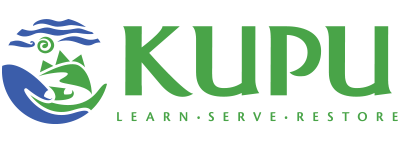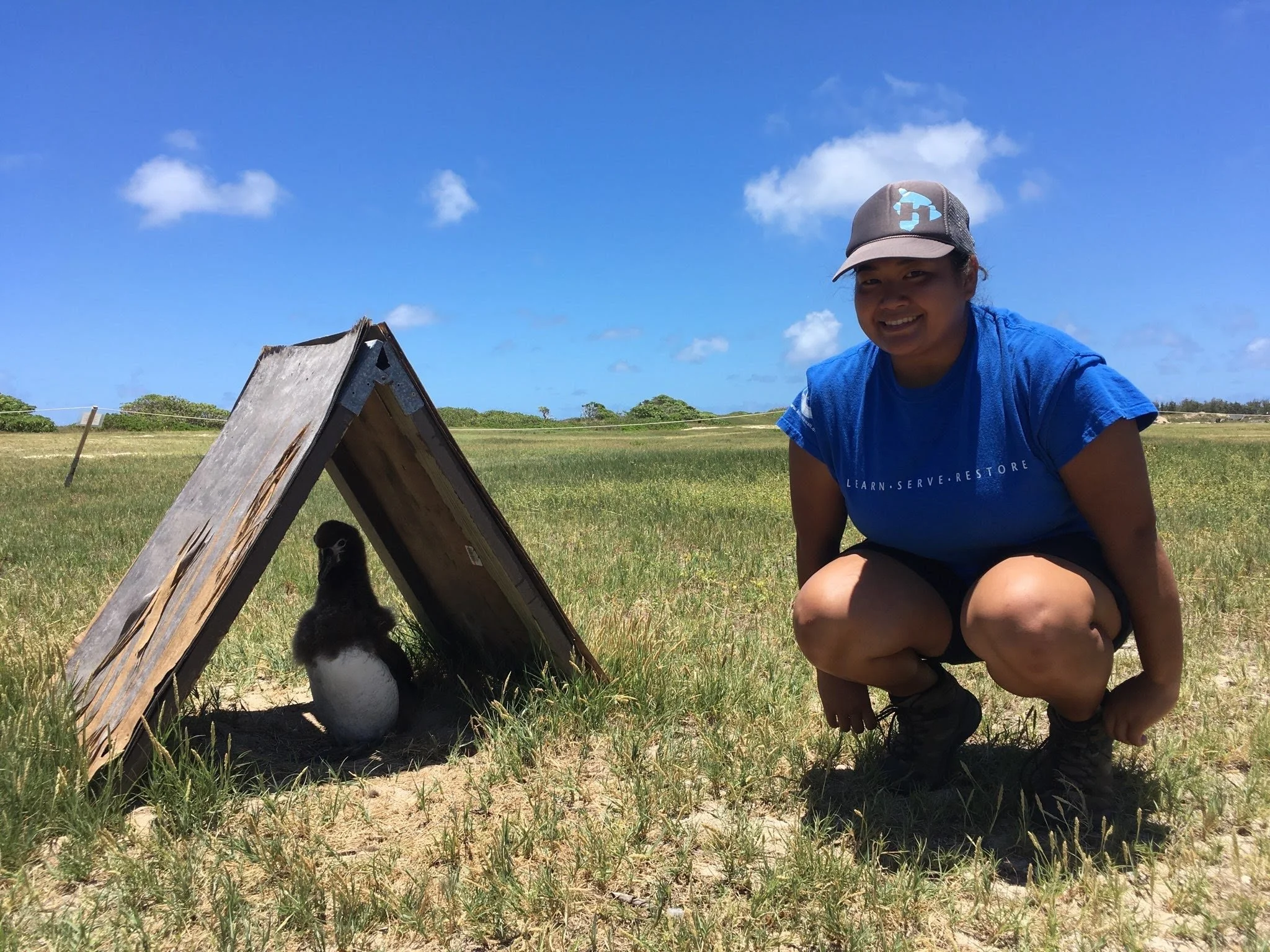
BLOG
Ke kololio ka hau o uka, ko mai ka nae ʻaʻala o ke kiele.
When the dew-laden breeze of the upland creeps swiftly down it brings with it the fragrance of the gardenias.
Kupu Collaboration - Emily Brines
Kupu Collaboration by Emily Brines, Kupu Conservation Leadership Development Program (CLDP) member based at Kawai’ele Waterbird Sanctuary. One of my absolute favorite parts of my position with Kupu is how frequently I have the opportunity to serve with other teams to do conservation work, inside and out of my host site with DOFAW. Over the past month, I’ve had several experiences that have made me really thankful for this facet of collaboration in my position.
Kupu Works with the Mālama Learning Center
SPOTLIGHT | My name is Karlee Eugenio; I was born and raised here on the island of O‘ahu. I earned my degree from UH Hilo in environmental science with a minor in geography.
A Look at Kupu’s Pacific Resiliency Fellows Inaugural Class
In July of 2019, Kupu graduated its first cohort of Pacific Resiliency Fellows – 11 rising professionals who are working to transform their communities on Oahu, Hawaii Island, American Samoa, CNMI, Guam, Palau, and Rapa Nui. The Pacific Resiliency Fellows program has three aims: to build local capacity, to create a network of environmental professionals, to amplify real-time, on-the-ground natural and cultural resource management projects that build community resilience.
Opinion: Volunteering is Necessary for Student Well-Being
In the thick of studying for classes and preparing projects for the upcoming Student Undergraduate Research Fair, students from Kapiʻolani Community College’s Ecology Club volunteered on Nov. 5-6 for the Oʻahu Waterkeepers, a local Waterkeeper Alliance chapter fighting for drinkable, fishable, swimmable water.
Resources: Anti-Black and Environmental Racism
Kupu hosted a panel of speakers to comment on environmental racism and anti-black racism in Hawaiʻi. Dr. Akemi Glenn, Keliʻi Kotubetey, and our very own Julianna Leong shared about race, the environment, and how environmental organizations can make meaningful change to be anti-racist.
Resources for Native Plants
Hawaii’s native ecosystems have been under severe attack for well over 200 years now. However, Kupu’s numerous programs are engaged in conservation projects across Hawaiʻi and the Pacific Region, including native habitat restoration.
My Year of Maui Conservation Serving Keālia Pond National Wildlife Refuge with Kupu
The name Keālia Pond National Wildlife Refuge is a bit misleading. The 704-acre refuge comprises the largest lowland wetland on Maui, and the third largest in the state of Hawai’i. While the “big pond” retains water year round, the surrounding mudflats and smaller ponds are subject to desertification during the dry season.
In the Field | Kiana Dulan: Mālama Loko Ea Foundation
Hi. My name is Kiana Dulan, and I have no idea what I want to do with my life. At least I didn’t until after Kupu. I was always vaguely interested in helping the environment, but my personal efforts never made the difference I desired. During high school, I was one of the students who had continuous existential crises. This was followed by a lack of motivation to be an overachiever and to do just enough to skate by. It worked! I existed and nothing more than that. However, there was still an urge to do more in my community, to “be the change I wanted to see in the world.”
In the Field | Ben Buescher: Kīlauea Point National Wildlife Refuge
My entire life I knew I belonged in the conservation, so when I graduated from Colorado State University with a wildlife biology degree, I took swift action pursuing the next step in my career. I had landed a temporary position doing vegetation management for open spaces in the county where I went to school. Returning home at 3:30 every day, I made a habit of looking and applying for jobs for about an hour every day. I did this for about a month before I started hearing back from employers consistently. I remember seeing Kupu’s posting on Conservation Job Board in early July.
Building Resilience on Kauaʻi
Kupu Community Resilience AmeriCorps VISTA Program provides full-time volunteers to non-profit organizations, educational institutions, and local governmental agencies that serve low-income communities. The VISTA (Volunteers in Service to America) model is driven by communities in need, with the goal of expanding the capacity of local efforts through addressing community challenges and developing initiatives that enable people to become increasingly self-sufficient and secure. Through this service to others, Members gain valuable experiences for their own career while simultaneously enhancing the capacity of the organizations/communities they serve within.










